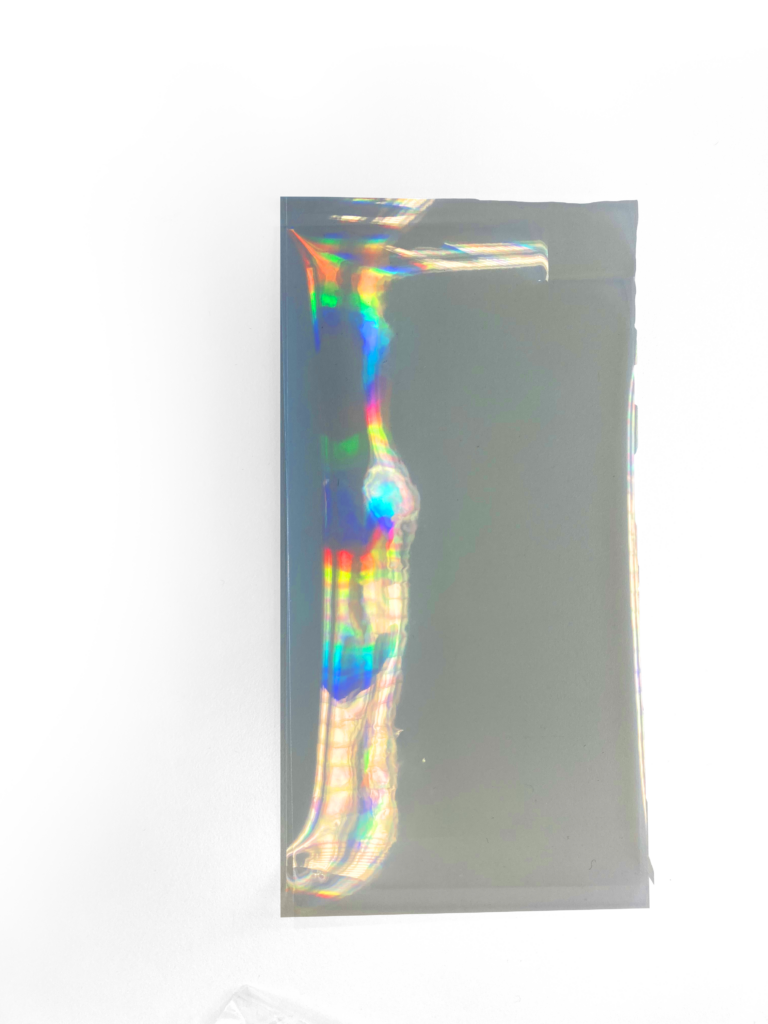
Please, have a look through the spectrometer! You can hold it in front of different light sources and then tilt it a bit. Can you see that different light sources emit different spectra of electromagnetic waves? The spectrum of an incandescent lamp is continuous from blue to red. Light-emitting diodes (LEDs) are strong in the blue range. Compact fluorescent lamps emit only parts of the rainbow-coloured spectrum of visible light. Taken together, the electromagnetic waves emitted by these light sources make white light.
The spectrometer diffracts their waves just like a prism or water droplets in the air. The diffraction trick is performed at very small translucent lines or slits in the spectrometer grating foil. The light waves are deflected at the slits whereby the low-energy radiation is diffracted more than the higher-energy radiation. As a result, the light is sorted into the colour palette of a rainbow.
The most energetic visible waves, in the range of 400 to 500 nanometers (nm), just next to the ultra-violet, look blue. They have the greatest impact on the circadian day-night rhythm of living species. This is why we should not expose ourselves to blue-rich light sources like LEDs at night. They might mess up our hormonal system and suppress the melatonin that makes us tired in the evening.
Green light waves in the spectral range of 500 to about 600 nm are a tiny bit longer than their blue ‘neighbours’ and have a bit less energy. Nevertheless, we can see them very well. In fact, the human eye is most sensitive in that part of the electromagnetic spectrum, which makes sense in evolutionary terms as our ancestors’ lives depended on green habitats that promised water and food.
The longest and lowest-energy wavelengths we can perceive look red and fade above 700 nm into the infrared part of the spectrum from where it gets warm and warmer. This explains why cool-white LEDs are more energy efficient than warm-white LEDs. And if you remember incandescent light bulbs and their nice warm glow – they were phased out as light sources in the European Union and other national markets because they mostly emit invisible waves in the form of heat and only very little visible light.